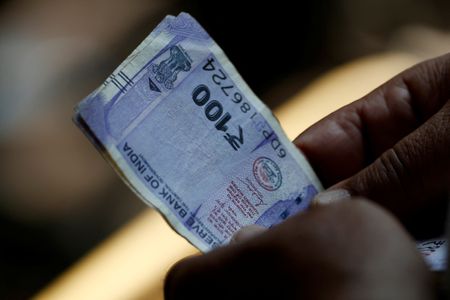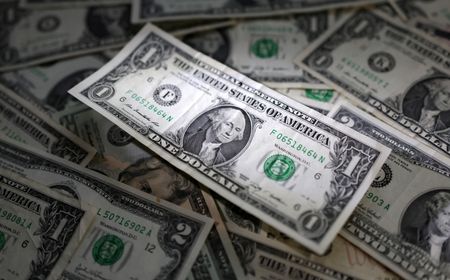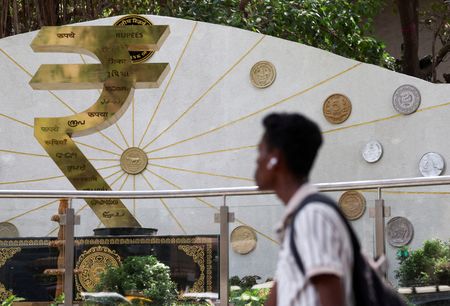By Jaspreet Kalra
MUMBAI (Reuters) – Dollar-rupee forward premiums eased across tenors this week as a pullback in the dollar-rupee overnight swap rate coincided with U.S. bond yields climbing a leg higher, lowering the cost of hedging against weakness in the rupee.
The 1-year dollar-rupee implied yield, for instance, has fallen about 25 basis points over May so far and was hovering at an over two-month low of nearly 2% on Thursday.
Similarly, the 1-month dollar-rupee forward premium has eased to a near 6-month low of about 14-15 paisa on the back of a pullback in the dollar-rupee overnight swap rate.
While the dollar-rupee forward premiums had climbed earlier this month when the India-Pakistan conflict flared up, traders pointed out that they have since shed the risk premia and that far forwards could likely keep trending lower amid the rise in U.S. bond yields.
The 1-year U.S. Treasury yield has climbed nearly 30 basis points this month amid persistent concerns about the U.S. fiscal situation and uncertainty about the future path of Fed policy rates.
A swap trader at a large private bank said he prefers to “receive forward premiums on up-ticks,” and that 1-year dollar-rupee implied should ease to about 1.90% in the near term.
The rupee, meanwhile, is expected to stay rangebound between 84.50 and 86 in the near term with traders keeping an eye on developments in U.S.-India trade talks and the dollar’s overall trajectory.
On the day, the rupee dipped slightly to 85.67 per U.S. dollar, compared to its close at 85.6375 in the previous session.
Asian currencies were mostly higher between 0.1% and 0.4% while the dollar index eased to 99.5, down for the fourth consecutive session.
Persistent worries over the U.S. fiscal situation and uncertainty about the impact of U.S. tariff policies have hurt the dollar and driven it down by over 8% in 2025 so far.
“The market’s focus on the weakness of the USD is structural,” DBS Bank said in a Thursday note.
(Reporting by Jaspreet Kalra; Editing by Janane Venkatraman)










